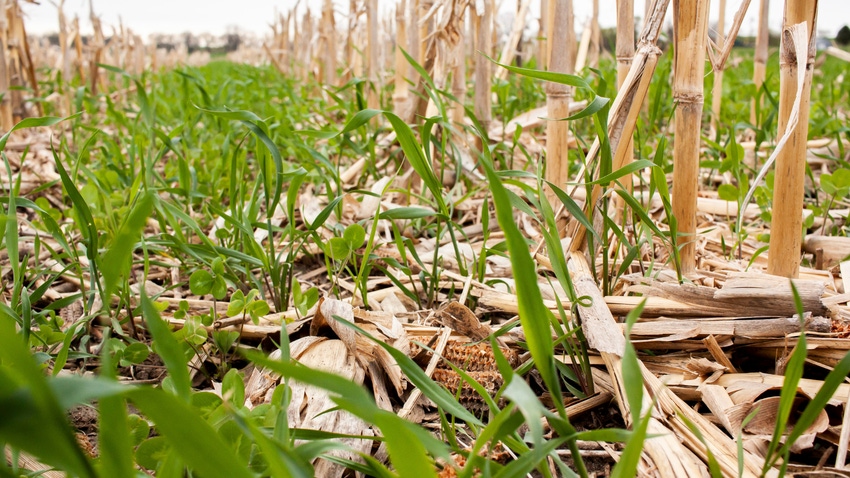July 1, 2023

From building soil health, to protecting your fertilizer investment, to providing an additional monetary value, there are many reasons why you should leave residue on your fields. But there is a balance that needs to be made when considering crop residue management.
“What we want is to be able to keep residue on the field, but to control it, and not have it cause any problems come spring,” explains Dave Stark, Ph.D. and President of Agriculture at Holganix.
Soil microbes are required for the breakdown of crop residue and the release of stored nutrients. Here are five roles that soil microbes play in residue degradation:
1. Decomposition
Soil microbes, including bacteria, fungi, protozoa, and actinomycetes, are responsible for breaking down lignin, pectin, and hemicellulose (the complex molecules present in crop residues).
Fungi are the most efficient microbes in this group at breaking apart particularly tough residues. This decomposition process releases nutrients stored in the residue, making the nutrients available for uptake by plants in future growing seasons.
2. Nutrient Cycling
As soil microbes decompose crop residues, the residue releases nutrients trapped in the plant material. The breakdown of organic matter by microbes helps release elements like nitrogen, phosphorus, and potassium, as well as micronutrients, back into the soil.
This nutrient cycling is essential for sustaining plant growth and maintaining soil fertility.
3. Carbon Sequestration
Crop residues are rich in carbon and soil microbes play a vital role in carbon sequestration. When crop residues are decomposed by microbes, some of the carbon is stored in the soil as stable organic matter, which contributes to soil fertility and water-holding capacity.
4. Enhancing Soil Structure
Soil microbes produce sticky substances, like polysaccharides and glues, that bind soil particles together, promoting soil aggregation. This aggregation enhances soil structure and stability, improving water infiltration and reducing erosion.
Crop residues provide a food source for soil microbes, promoting their activity and creating a favorable environment for soil aggregation.
5. Disease Suppression
Some soil microbes, particularly beneficial bacteria and fungi, can suppress plant diseases. They compete with harmful pathogens for resources and produce antimicrobial compounds, reducing the incidence and severity of plant diseases associated with crop residues.
Meet Holganix Bio 800+ Breakdown
Holganix Bio 800+ Breakdown charges soil with a consortium of over 800 species of soil microbes, nitrogen, and microbe food. The microbes have heightened species, especially fungi, that play a special role in crop residue breakdown.
What can you expect from Holganix Bio 800+ Breakdown?
Enhances planter performance
Breaks down crop residue
Improves seed emergence
Releases locked nutrients
Builds soil health
Improves emergence and stand establishment with any cover crop planted through residue
How Does Holganix Bio 800+ Breakdown Work?

How does Holganix Bio 800+ Breakdown Work? Photo submitted by Holganix
Holganix Bio 800+ Breakdown contains an entire microbiome, or community of organisms that is both abundant and diverse. In a single jug of Holganix Bio 800+ Breakdown, there are over 800 species of active microbes, microbe food, and nutrient enhancers. In addition, Holganix has spiked Bio 800+ Breakdown with powerful slow-release nitrogen.
To better facilitate the breakdown of crop residue, Holganix has tailored the microbes in this product to have heightened populations of microbes responsible for residue breakdown.
Some of these microbes include, but are not limited to, Aspergillus niger, Aspergillus terreus, Penicillium polonicum, Gluconacetobacter rhaeticusi, Janthinobacterium lividum, and Pseudomonas veronii.
These microbes break down crop residue to enhance planter performance, saving you time and frustration. Further, less crop residue means the soil warms faster, providing more evenly distributed seed emergence in the spring. These microbes also enhance your soil investment by releasing organic matter, building the soil microbiome, and unlocking nutrients in your crop residue.
You May Also Like

-01-01.png?width=300&auto=webp&quality=80&disable=upscale)



